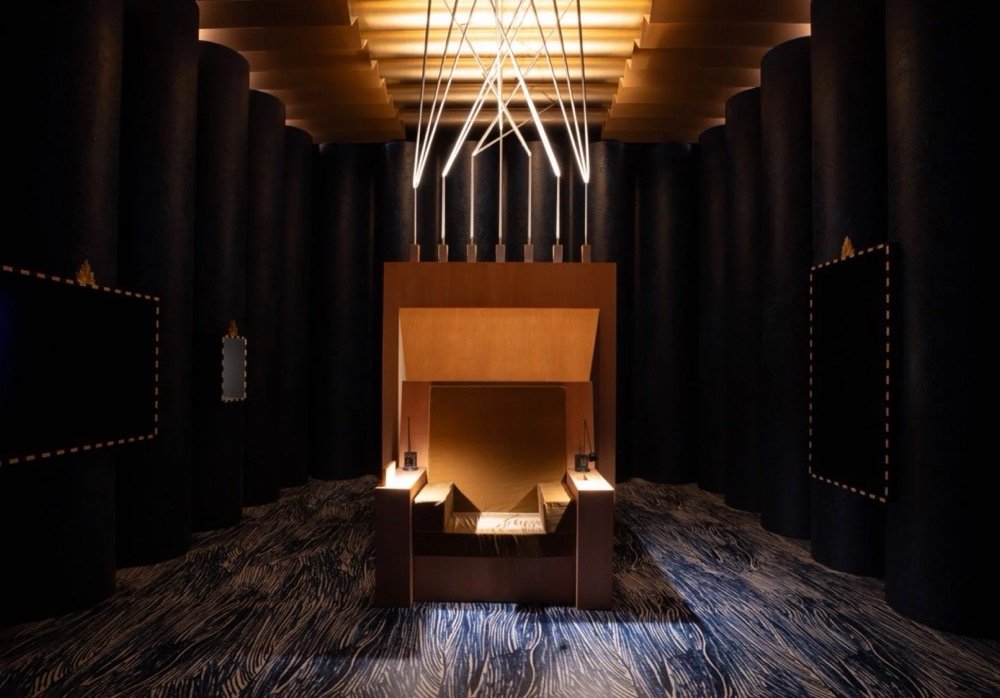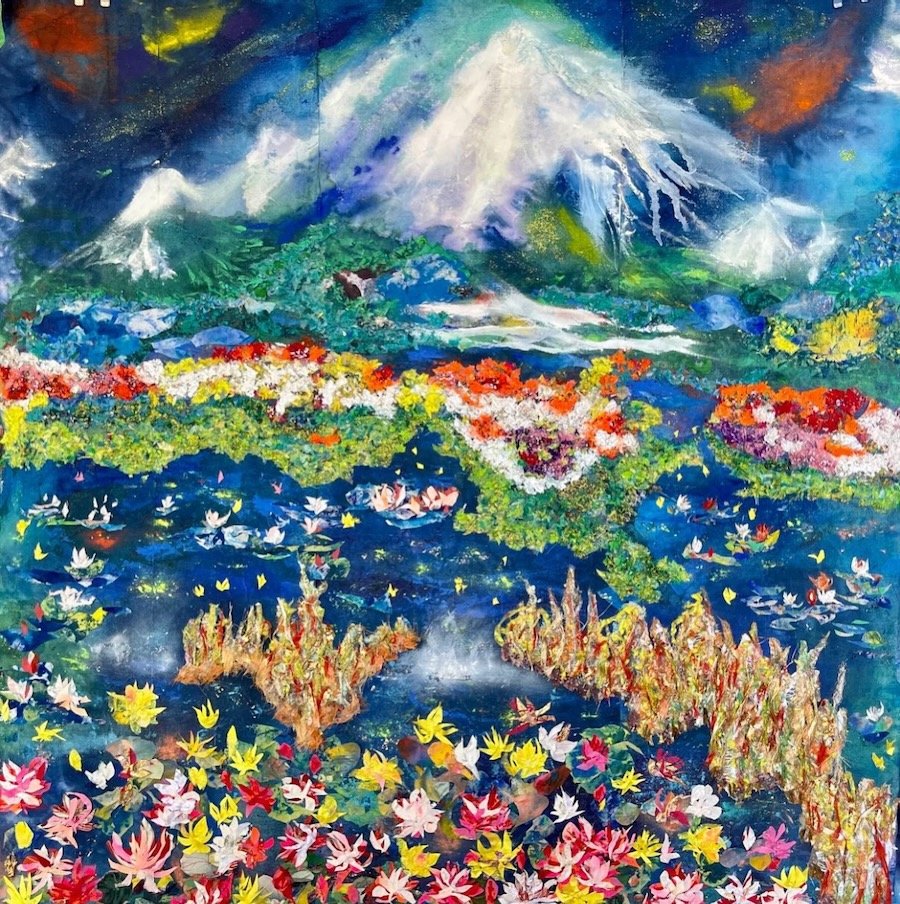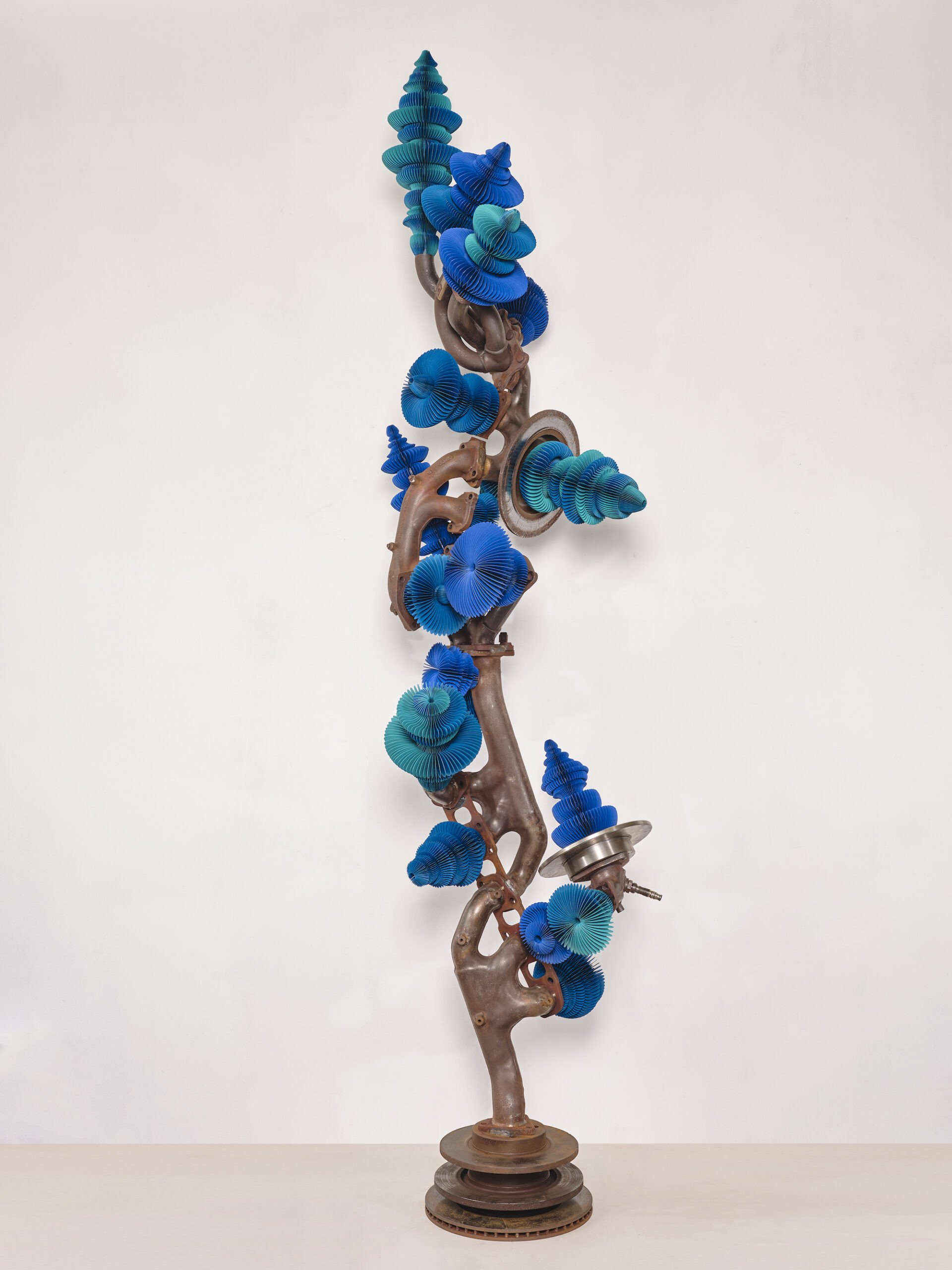the floral still lifes of Christiane Kubrick (in EYES WIDE SHUT)
I really need to revisit EYES; it’s been far too long.
(via artnet)
I really need to revisit EYES; it’s been far too long.
Christiane’s paintings serve as more than decoration. Their floral subject matter reinforces the movie’s themes of lust and decay. Another work titled Homage to Van Gogh, an imitation of the Dutch master’s work seen in the background as the characters eat breakfast and watch TV, evokes the concepts of truth and authenticity, which play a central role in this story about a troubled marriage.
As author Juli Kearns explains in a frame-by-frame analysis of the film:
“What is authentic and what is not the real thing? What hasn’t fidelity? Butter is not butter and what represents itself as a bear is instead honey. In the Looney Tunes cartoon, Santa proves to instead be the Tasmanian Devil when the soot is removed. And then there’s Christiane’s rendering of Van Gogh flowers in homage of him.”
(via artnet)
via Dezeen ::

Lynch had a clear vision for the space from the beginning, taking an interest in the materials and colours used and even creating a small decorative sculpture that sits at the top of the picture frames that hang on its walls.
"We sent him twelve samples for the walls, with more texture and less texture and many different blue shades," di Benedetto said. "He was happy like a child when he received all of the samples in LA."
On top of the large chair, seven metal rods connect it to the ceiling, where they branch out. Like the often ambiguous images in his films, the design was left unexplained by Lynch.
"The only thing that we know is that these are the connections between something like the soul and the absolute; a flow of energy from your soul," Monda said.
First piece of original art I’ve added to The Collection, and it’s a beautiful one, page eight of DETECTIVE COMICS, No.982. Fiumara is incredible:

And we're back to the weekly list: Squarespace changed up their iPad editor and made it impossible to add links, so it's simpler to do it this way and put it together once a week on the Mac.
As if the beauty of her work as a whole wasn’t amazing enough, her attention to the smallest detail never ceases to amaze :: Star Costume Designer Ruth E. Carter on Fashioning Afrofuturism | artnet
The black and white photos of Macdonald's work are incredible; like PDR, I can only imagine how amazing the color was in reality :: The Art of Sutherland Macdonald, Victorian England’s “Michelangelo of Tattooing” (ca. 1905) | The Public Domain Review
🤯🤯 :: Immersive Bamboo Installations by Asim Waqif Whirl and Heave in Monumental Motion | Colossal
The Armored-Knight "Robot" Designed by Leonardo da Vinci (circa 1495) | Open Culture
Better late than never, I suppose :: Keurig Just Killed The Coffee-Pod With Their New Biodegradable Compressed Coffee Pucks | Yanko Design
At last, an AI with impeccable gaming taste :: Google DeepMind’s Latest AI Agent Learned to Play 'Goat Simulator 3' | WIRED
Someone has to have the adaptation option on this story, right? :: The Ghost-Busting 'Girl Detective' Who Awed Houdini | Atlas Obscura
Very cool :: Teen Titans Live-Action Movie in the Works at DC Studios | The Hollywood Reporter
And, finally, re-linking / linking within to the teaser for MOUSE, an upcoming game from Fumi Games that takes the CUPHEAD / Tex Avery aesthetic and turns it into an FPS.
I've been familiar with Vidocq's wild story for awhile, but this excellent longread is a perfect summation: Eugène-François Vidocq and the Birth of the Detective | The Public Domain Review
Artist Pandora Graessl’s Transportive “Amor Fati: When the Fire Bit Me” Exhibition | Cool Hunting
The five finished minutes included in this piece are incredible: The Russian Animators Who Have Spent 40 Years Animating Gogol's "The Overcoat" | Open Culture
Yours for $25k: Brian Eno's light-up turntable changes colour in "complex and unpredictable" patterns | Dezeen
Art Bites: Surrealist Painter René Magritte Was a Master Forger, Too | artnet
Autodidacts FTW: Noriko Sugiyama Transforms Old Kimono Into Luxurious Landscapes | Spoon & Tamago:

At around age 60, with her 3 children all grown up and out of her hands, Sugiyama decided to relocate from Saitama up north to Iwate prefecture where she had relatives, and was closer to her birthplace of Aomori. She obtained her chiropractors license and opened a small practice where she served the local community for over 10 years.
One day, Sugiyama found a pack of discarded colored markers near a dumpster. Noticing that they were still in good shape, she decided to take them home and begin doodling. Soon, images of trees and rivers all inspired by the nature of Aomori began pouring out of her and onto the pages of a sketchbook. After a year or so of sketching with the markers, Sugiyama remembered her mother’s colorful kimonos that had been stored away. There was no use for them in storage so the artist, whose creative juices were now flowing, decided to begin incorporating them into her work, which eventually led to a style she has coined as “Kimono Reborn Art.”
Excited for this one: Wagner + Jones + Dracula = instant sale: Dark Horse to bring DRACULA BOOK 1: THE IMPALER to eager blood fiends this October | ComicsBeat
Fourteen views of Himeji Castle | {feuilleton}
Favorite headline of the week: Yakuza member selling soda arrested for extorting money from ninja spreading flyers in Asakusa | SoraNews24
Seatbelts inform Steady walking aid for elderly dogs | Dezeen
‘Black Panther’ Costume Designer Launches Otherworldly 3D-Printed Handbags | Yanko Design
Dream home = found: A Pair of Backyard Cabins Are Worlds Removed From Their Main Residence—But Only Steps Away | Dwell
And finally, a wonderful look inside OSU's Billy Ireland Cartoon Library and Museum. Need to make a return trip sooner rather than later… Inside the World’s Largest Comics and Cartoons Collection | Hyperallergic
Experimenting with returning links to being their own weekly post (or perhaps twice-weekly, on Weds and Sat?), a hodgepodge of trailers and quotes and more. Plus it’s easier to update these at the last minute than it is trying to update the newsletter before it sends (and K said she enjoys clicking through them so there). Anyhow…
Fans Flock to Witness a Single Chord Change in John Cage’s 639-Year-Long Organ Performance | artnet
See Stunning Photos of Pompeii’s Wall Paintings and Mosaics, Now Compiled in a New Book | artnet
You may take my money now. Dan Trachtenberg To Direct New Standalone ‘Predator’ Movie ‘Badlands’ As 20th Century Expands On Universe | Deadline
Her work is amazing, modern art in quilt form: Mary Lee Bendolph, Gee’s Bend Quilter | American Age Fashion
HIGH AND LOW is my favorite Kurosawa film; I'm hopeful that this will be better than the last time Spike Lee remade the work of an Asian filmmaker: Denzel Washington & Spike Lee Reunite For High And Low Remake | Bleeding Cool
A Portfolio: Ji Zou | Juxtapoz Magazine
Just finished A RAGE IN HARLEM, and Himes has already become one of my favorite authors. Good timing, NYT: The Crime Novelist Who Was Also a Great American Novelist | NYT (paywall)
And finally, an intriguing read on the notion of embodiment and the potential for prostheses to become a mix of personal sculpture and human augmentation: Why prosthetic limbs need not look like real ones | The Economist (paywall):
And if a prosthetic need not mimic the limb it is replacing, then perhaps prosthetics could be more than just replacements? Ms Clode is an expert in the design of robotic prostheses controlled by artificial tendons. She is keen to explore the possibility of augmenting existing bodies with new capabilities, making prosthetics “a technology that could be of use to everybody, not just amputees”. To that end she has designed the “Third Thumb”, a small and robust prosthetic digit that does exactly what it says on the tin. Controlled, like Ms Knox’s vine-arm, by pressure sensors in a pair of shoes, the thumb can be used to replace a missing one. But it can also be added to an intact hand on the opposite side from its existing, biological thumb.
Stunning sculptures made of salvaged, welded car parts and origami:

In his solo exhibition Excess of Desire at Gallery Rosenfeld, Miyazaki’s sculptures appear to grow from the floor or sprout from pedestals. Metal components meet intricate origami, exploring the dualities of robustness and fragility, the decorative and the utilitarian, and heaviness and lightness. The ends of pipes blossom with colorful fans and spindles of folded paper, juxtaposed with car parts in a reference to the 20th-century automotive boom and advancing technology.
Miyazaki articulates ideas around functionality and decay by welding together fragments of mufflers and engines that no longer operate for their intended purposes. He incorporates carefully selected parts, such as specialized mufflers that were produced illegally in the 1980s and 1990s, which rose to popularity because they could increase the car’s noise level and produce a specific sound. Challenging the frivolity of excess in wealthy society, the artist reframes the components as flourishing, botanical-like forms.
Yeah, I know they’re all freakish but Tinky Winky is terrifying without the hood (crossover with the Realistic Lego Man req’d)… (via)
If it works, an amazing breakthrough: Driving cancer cells to commit suicide | The Economist
Mysterious Labyrinth Found Hidden Under a Church in Mexico | Science Alert
Ohio's pretty accurate, at least in my neck of the sticks: I Asked AI What Europeans Think Americans From Every Single State Look Like… | Buzzfeed
In which I learned the phase "ice cream zombie" and became determined to work it into something: Aichi woman arrested for stealing ice cream from a delivery truck because it was too hot | SoraNews 24
Take (more of) my money, Criterion: FREAKS / THE UNKNOWN / THE MYSTIC: Tod Browning's Sideshow Shockers out in October | Criterion Collection
Dream house = found: Solar-Powered Off-Grid Treehouse Perfectly Combines Nature, Sustainability + Luxury | Yanko Design
Hokusai’s Illustrated Warrior Vanguard of Japan and China (1836) | The Public Domain Review
Please let this happen: Anchor Brewing workers trying to save 127-year-old San Francisco institution | Washington Post
The collision of this with vantablack will cause the destruction of timespace, certainly: Scientists Have Developed the Whitest White Paint Ever Made—So Reflective It Can Cool Surfaces | artnet